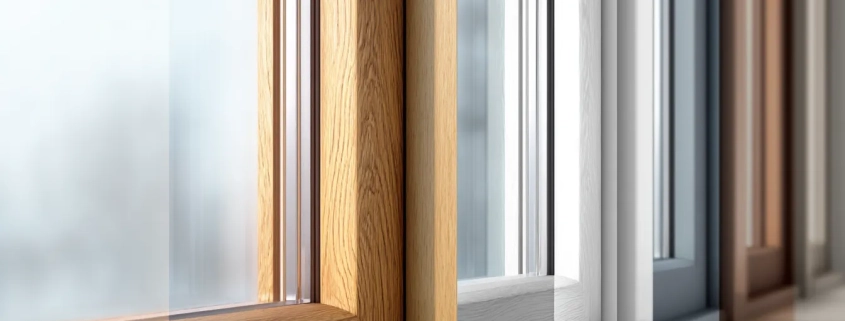Choosing the Right Material: Timber Joinery vs Aluminium vs PVC
Looking to compare timber joinery vs aluminium and PVC window frames? In this expert guide from Westpine Joinery, we explore the key benefits of choosing high-quality timber windows and doors, including superior thermal performance, timeless aesthetics, sustainability, and long-term value.
Discover why timber joinery remains the best option for energy-efficient homes, heritage renovations, and eco-conscious building projects—especially when compared to modern aluminium or low-cost PVC alternatives.
Exceptional Thermal Comfort & Energy Efficiency
Timber’s natural structure makes it an outstanding insulator. Unlike aluminium—which requires thermal breaks to achieve acceptable performance—and PVC, which traps heat, timber regulates temperature effectively.
- Timber naturally inhibits heat transfer, maintaining consistent indoor warmth.
- Aluminium, without a thermal break, conducts heat—but even with breaks, it trails timber’s inherent efficiency
- PVC insulates well yet lacks timber’s breathable benefits.
Design Versatility & Timeless Aesthetics
Fine timber frames evoke warmth, elegance, and authenticity—ideal for character homes and contemporary designs alike.
- Fully customisable profiles, stains, paints, and bespoke detailing
- Aluminium delivers sleek modern lines but lacks wood’s organic texture
- PVC mimics wood but lacks depth, with limited styling options.
Durability & Maintenance: Built to Last ‘By Design’
With routine upkeep, Westpine timber frames can last well beyond 60 years—repairable and rejuvenated, time after time.
- Timber can be refinished or repaired throughout its life
- PVC and aluminium, while low-maintenance, cannot be refinished—once damaged, replacement is the only option
- Timber’s ongoing care extends lifespan, often outperforming PVC across its life cycle.
Sustainable & Environmentally Responsible
Westpine sources timber responsibly. Our frames are sustainable, biodegradable, and eco-friendly.
- Timber is renewable, stores carbon, and has low embodied energy
- PVC is chemically intensive with poor end-of-life impact
- Aluminium is fully recyclable but energy-intensive to produce.
Indoor Air Quality & Comfort
Timber enhances living environments—regulating humidity, reducing dust, and improving well-being.
- Wood breathes naturally, aiding moisture control and minimising condensation
- PVC frames trap stale moisture, and aluminium lacks hygroscopic benefits.
Long-Term Value & Investment
While timber may command a higher initial investment, its lifecycle value is unmatched.
- Timber: exceptional ROI from energy savings, refinishing, and durability
- Aluminium: sturdy and low maintenance, though less efficient without upgrades
- PVC: cheap upfront, but may need replacement every 20–30 years.
| Feature | Timber | Aluminium | PVC |
|---|---|---|---|
| Thermal insulation | Superior | Moderate (improved with thermal break) | High |
| Aesthetic appeal | Warm, traditional, customisable | Sleek, modern, slim | Practical, limited finishes |
| Eco impact | Renewable, low carbon footprint | Recyclable but energy-intensive | Carbon-intensive, non-breathable |
| Maintenance | Periodic refinishing required | Minimal maintenance | Very low, but not repairable |
| Longevity/repair | Lifespan 60–100 yrs, repairable | Up to ~40 years, not easily repairable | Durable but non-repairable |
Is timber joinery more energy efficient than aluminium or PVC?
Yes—natural wood is an excellent insulator, with up to 1,100× better thermal efficiency than aluminium
Can timber joinery be customised like aluminium or PVC?
Absolutely—wood can be painted, stained, shaped, and refinished to suit any style.
How does timber compare ecologically?
Timber has the lowest carbon footprint (85 kg CO₂e) versus PVC (110) and aluminium (161), especially when sourced sustainably.
Does timber require more maintenance?
It does need repainting or varnishing every few years—but this upkeep also helps prolong its life manifold.
Is timber joinery repairable?
Yes, unlike PVC or aluminium, wood can be patched, resealed, and refinished on-site indefinitely.
Is wooden joinery better for indoor air quality?
Yes—wood is breathable and doesn’t trap dust or electronic pollution like PVC, making it more allergy-friendly.
What about the cost—is timber more expensive?
The initial cost is higher, but long-term energy savings, durability, and repairability often yield better ROI.
Is aluminium joinery low maintenance?
Yes aluminium requires minimal service—but often needs a thermal break to match wood’s insulation performance.
Can timber match modern glazing for efficiency?
Definitely—modern timber joinery paired with double or triple glazing easily meets or exceeds building standards.
Which is best for heritage homes?
Timber is the go-to material for period properties—authentic, repairable, and fully customisable in traditional styles.
Heritage & Craftsmanship
As specialists in bespoke timber joinery, Westpine excels in heritage renovation. Our frames retain period-appropriate detailing while providing modern standards of performance.
Contact us today for a bespoke consultation—and bring timber’s enduring beauty and efficiency into your home.

